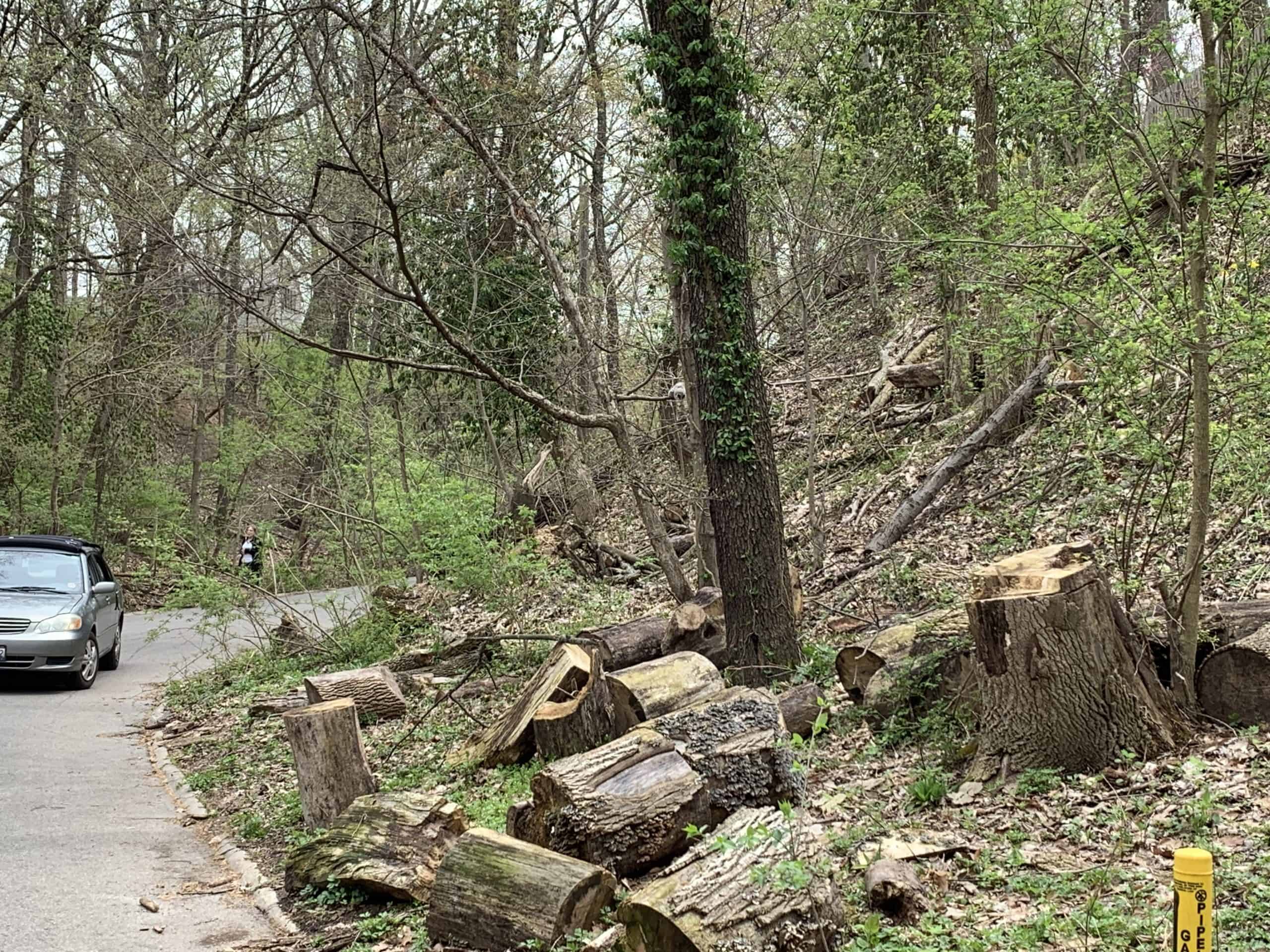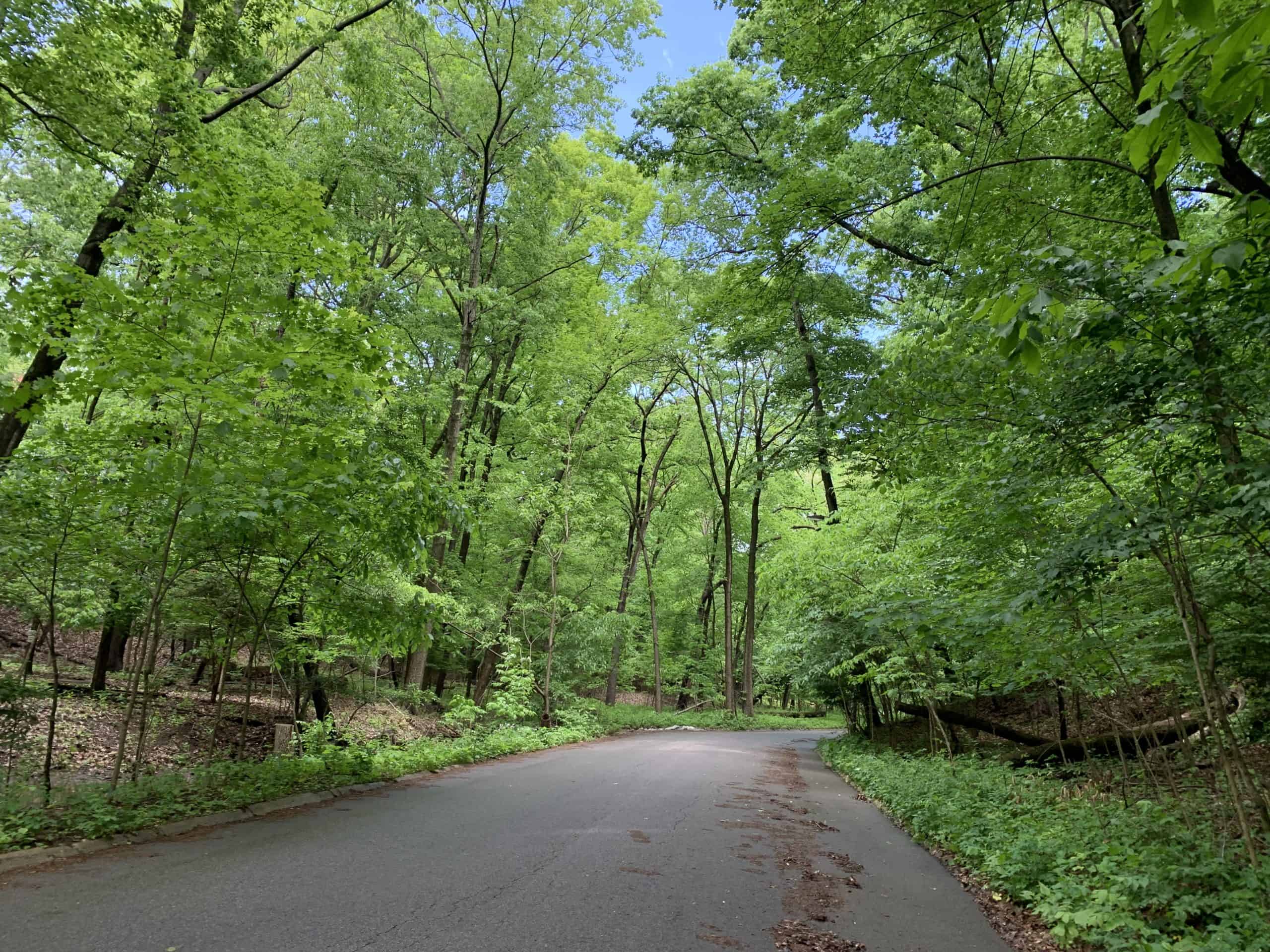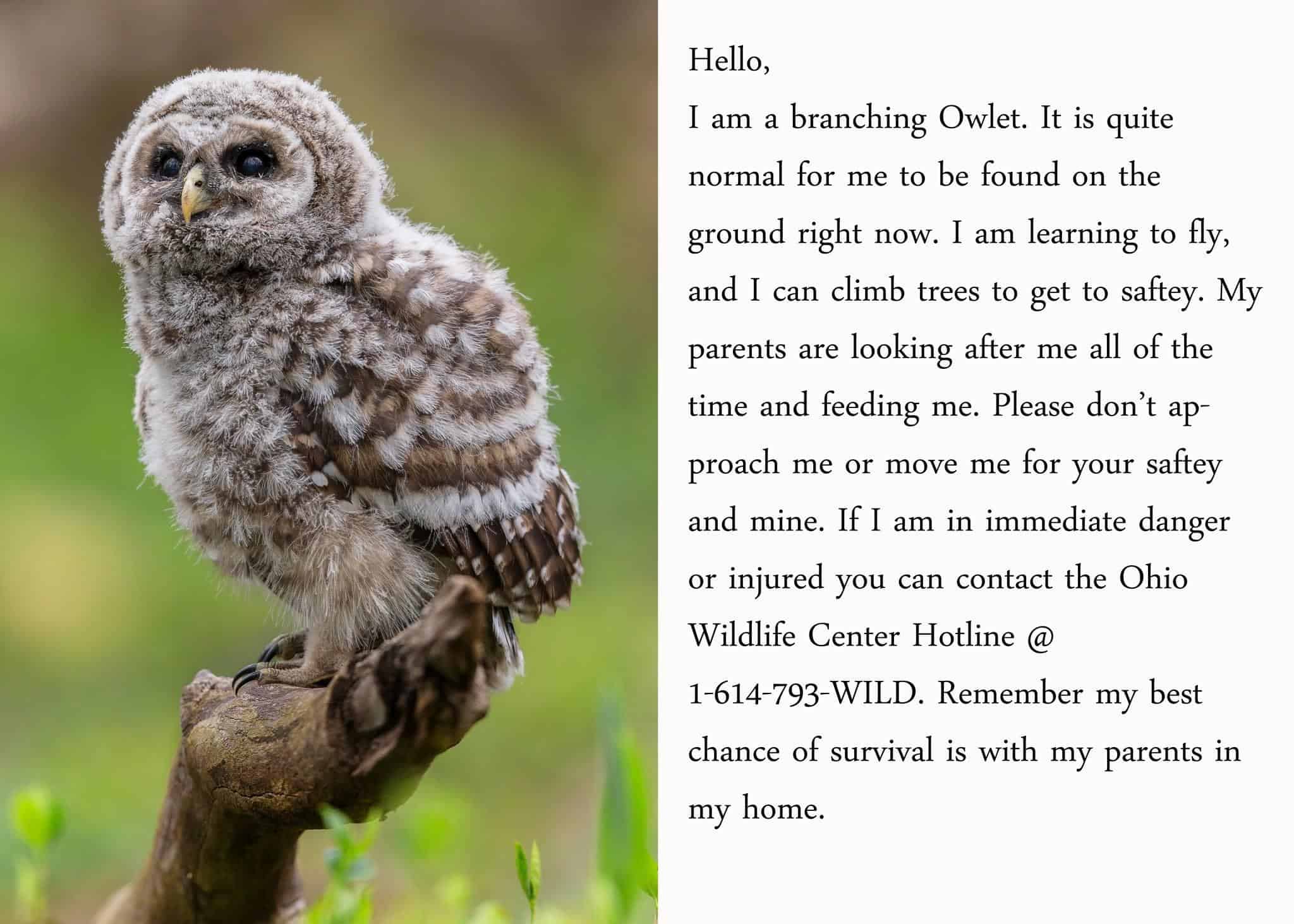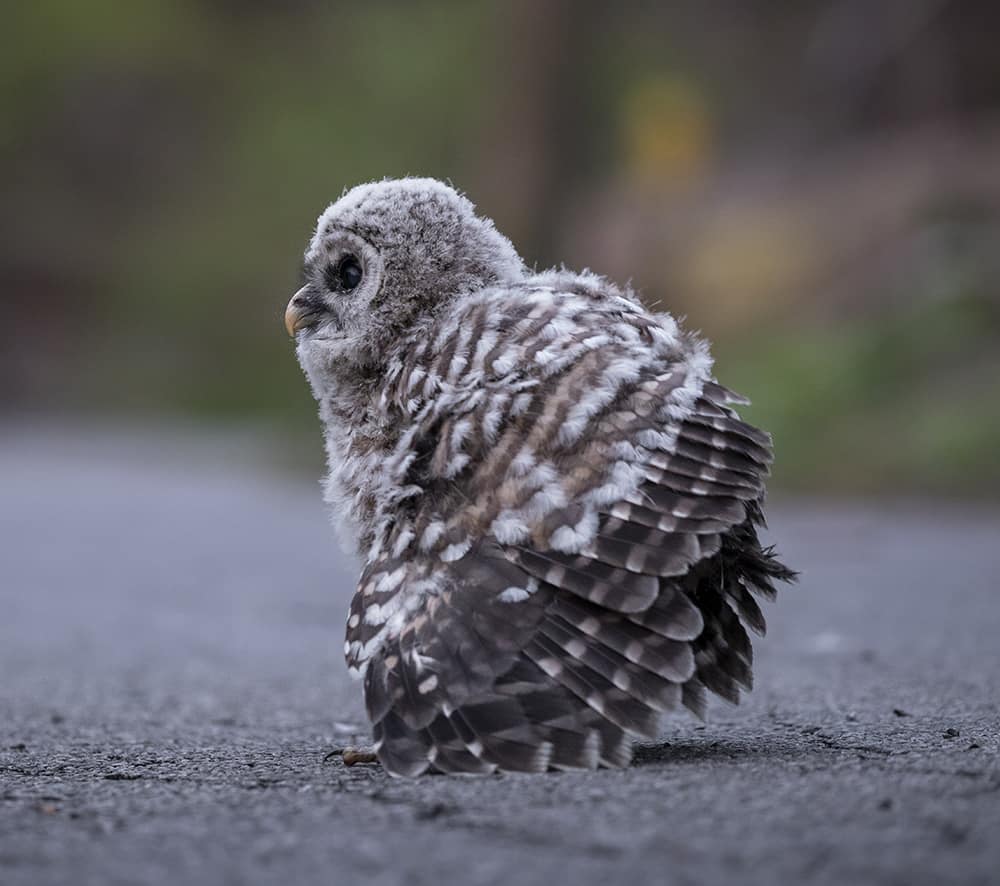Discovering a nest is, for me at least, a mixed bag. My instantaneous reaction is excitement—Wow! This is so cool! I can’t wait to watch this unfold!—followed almost immediately by what I know to be the overwhelming odds facing the nesting pair, to say nothing of the incoming brood.
In spring of 2019, this played out for me all too vividly, but over a much longer stretch of time. In early March, I had begun noticing an adult barred owl sitting sentry near a snag alongside a winding road. The adult continued its vigil for several days. About two weeks later, I noticed what were barred owl feathers (which I later learned belonged to the adult female) sticking out of a hollow in that very same snag, perhaps 18 feet off the ground. A nest! But how? The hollow looked like it could barely accommodate one adult owl; how could this teeny space also contain owlets?

An aside about this nest site: It’s not even a quarter-mile away from my home, in a wooded urban ravine. The aforementioned tree-lined road bisects it, with a stream on the north side, and homes built into the bluffs, overlooking the road from either side. Vehicles share this road with cyclists and, especially, with pedestrians. I realize my good fortune, a birder with this in my immediate vicinity, and I am grateful to live in proximity to such splendid habitat.

Anyway, I’ve lived in this neighborhood for more than 12 years, and as a bird watcher, I’d long known that barred owls lived in the ravine. But spring 2019 was different. This was the spring I was able to connect the abstract concept barred owls live in the ravine with a nest. Now that I had this context, I was invested, which led to a degree of stewardship. My curiosity led me to site monitoring, and my heart nearly burst each time I returned and learned something new. I began seeing a second adult owl (the male, I later realized), perched not far from the array of feathers in the hollow. A few days later, I noticed an absence of feathers—perhaps the female bird had incubated her eggs?
In early April, I began seeing the softest, downiest feathers poking out of the cavity. And when walking near the site around twilight, I noticed a haunting begging sound; David Sibley describes it as kssssssship. He’s not wrong, there are at least seven s’s. These barred owlets were making their presence well known, and I would be able to witness their development. Shortly after first hearing their begging calls, I took a late afternoon walk. I came upon the bend in the road near the nest, and I slowed. Where in the past there might have been an inquisitive neighbor or two checking out the nest, suddenly there were around a dozen people staked out. A few had big honking cameras. My protective instincts kicked in; I’ve birded with some awesome photographers, but I’ve also witnessed more than a few who were more invested in a good photo opportunity than in the subject’s welfare.
As I approached the site, I looked over and noticed a makeshift sign, as shown in this photo below:

So, I was not the only owl steward checking on this family! My mind raced: Who made this sign? Had something already happened to one of the owlets? What if this sign actually created too much attention? After a few minutes taking in the whole scene, I approached a guy who seemed to be fielding questions from passers-by.
And this is how I first met Chris Brinkman, wildlife conservation photographer.
In her next blog post, Kelly will share more details about this particular barred owl nest; how she and Chris collaborated to help one of the adults when it was injured; and, naturally, adorable photos of baby barred owls!



